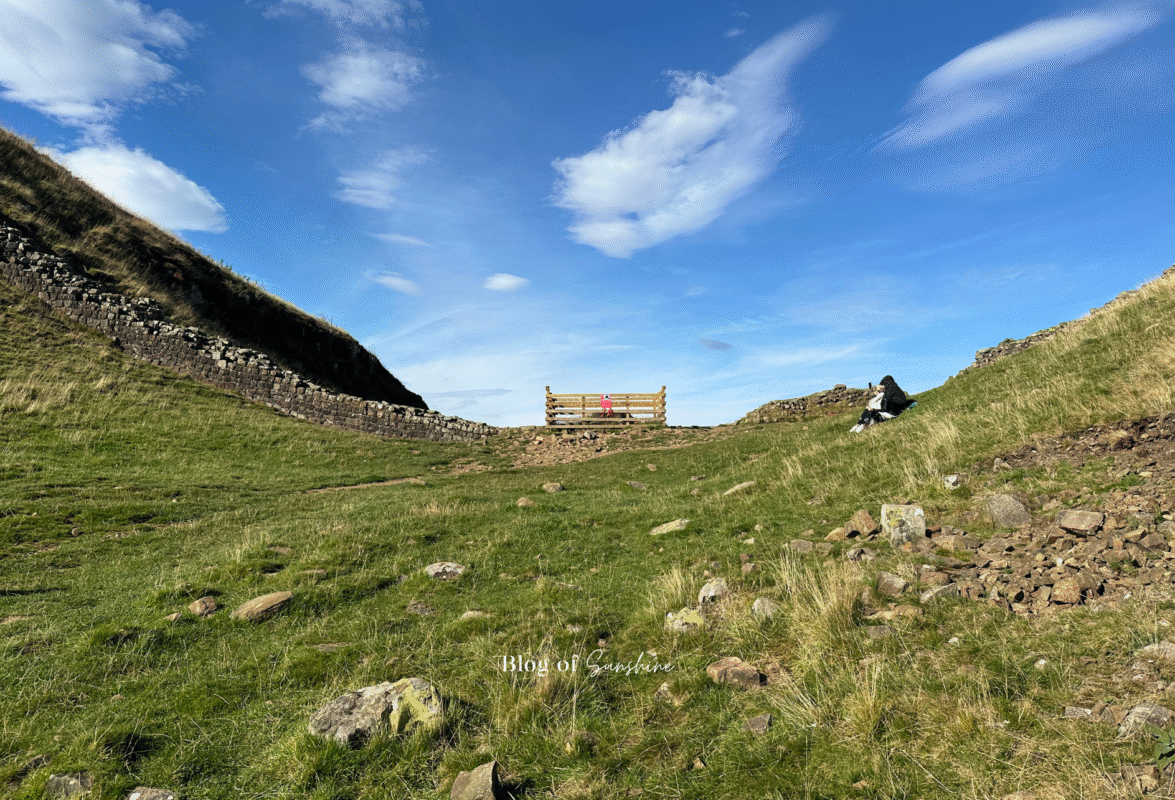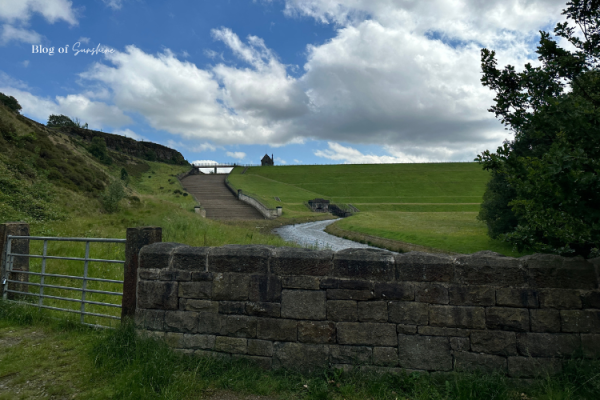Table of Contents
Walking from Steel Rigg car park to the Sycamore Gap is a scenic journey along Hadrian’s Wall, one of England’s most famous landmarks. This guide will help you plan your walk to the Sycamore Gap, with tips on what to expect and how to make the most of this short but unforgettable trail.
Parking at the Sycamore Gap – Starting your Short Walk to the Sycamore Gap
The Steel Rigg car park is relatively small and can accommodate approximately 30-40 cars, depending on how efficiently vehicles are parked. During peak times, such as weekends or holidays, it can fill up quickly due to the popularity of the Sycamore Gap and surrounding trails. If you’re planning a visit during busy periods, it’s advisable to arrive early or consider alternative parking options nearby, such as the Once Brewed Visitor Centre car park, which is larger and offers additional amenities. The ticket machine does take debit and credit card, although we experienced some issues due to the machines limited signal, so take some cash.
Walking through the fields
The adventure begins with a short walk through a field which does sometimes have cows in, so ensure dogs are on leads and that you don’t startle the cows.
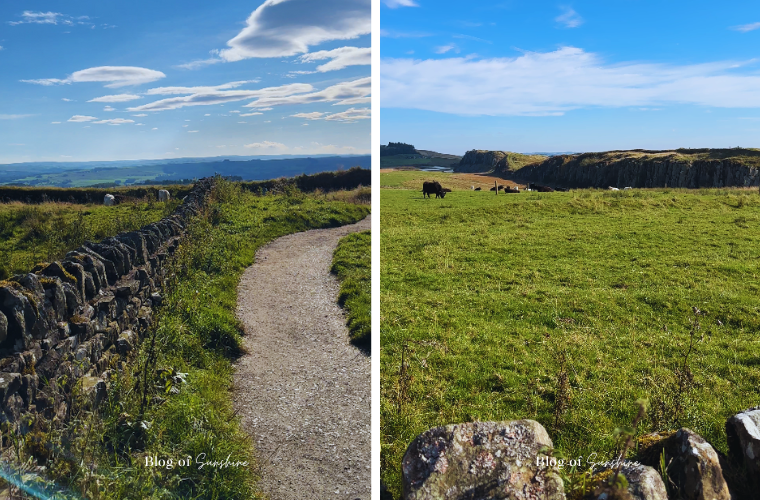
The first uphill climb
You are then faced with an uphill climb that quickly immerses you in the rugged beauty of Northumberland National Park.
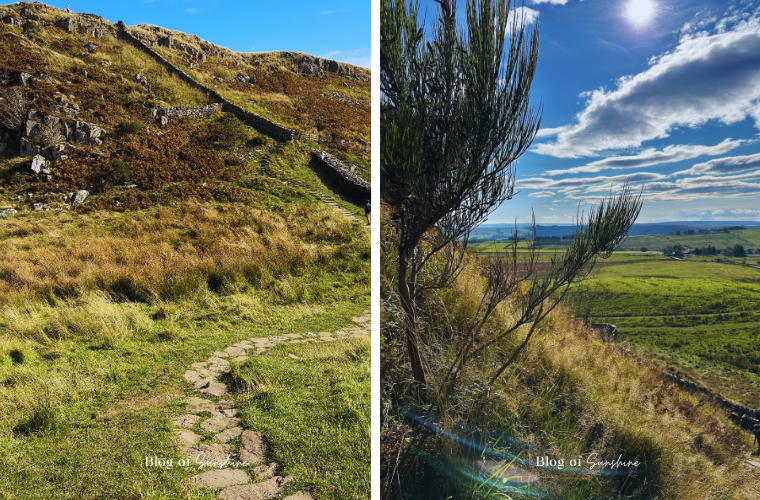
Whin Sill escarpment
The trail takes you along the Whin Sill escarpment, a natural geological formation that the Romans cleverly utilized to fortify their northern boundary. This strategic ridge offers commanding views of the surrounding countryside, where rolling green fields stretch into the horizon, punctuated by ancient stone walls and scattered farmsteads.
As you make your way along the path, you’ll walk alongside stretches of Hadrian’s Wall, which was constructed around AD 122 under the orders of Emperor Hadrian. The wall, built primarily of stone in this area, originally stood up to 15 feet tall and was reinforced by a series of milecastles, turrets, and forts. These structures served as lookout points and small garrisons for Roman soldiers, allowing them to monitor activity beyond the wall. On your walk, you may spot the foundations of these milecastles or the outlines of turret bases, providing a vivid glimpse into the Roman Empire’s vast and disciplined military infrastructure. The wall itself, with its finely cut stone blocks and robust construction, demonstrates the Romans’ engineering prowess and their ability to integrate natural features like the Whin Sill into their designs.
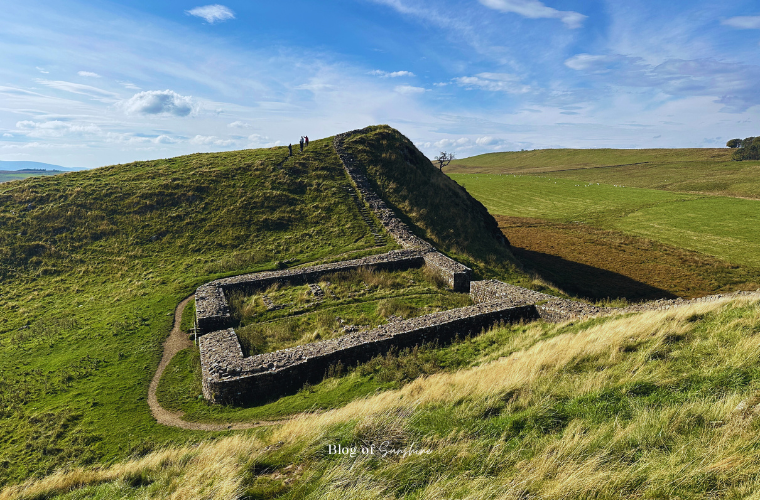
Descending to the Sycamore Gap
The highlight of the walk is reaching Sycamore Gap, where the trail descends into a dip that cradles what was one of Britain’s most iconic trees.
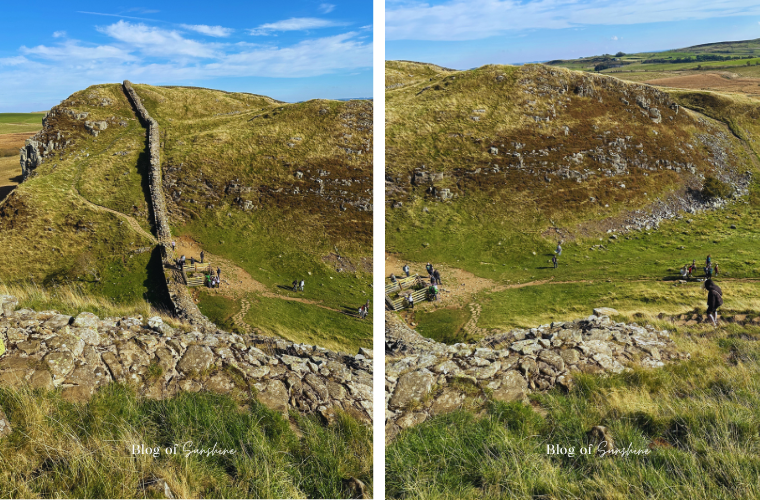
What is left of the Sycamore Gap tree
The iconic Sycamore Gap tree met a tragic end in September 2023 when it was deliberately felled overnight. This lone sycamore, nestled in a dramatic dip along Hadrian’s Wall in Northumberland, had stood for centuries and was celebrated for its striking beauty and cultural significance.
It was once framed perfectly by the steep slopes of the surrounding landscape and a prominent curve of Hadrian’s Wall. This section of the wall is remarkably well-preserved, allowing visitors to imagine how it would have looked when first built nearly 2,000 years ago. The tree, famously featured in the 1991 film Robin Hood: Prince of Thieves, and became a symbol of the area’s natural and historical beauty.
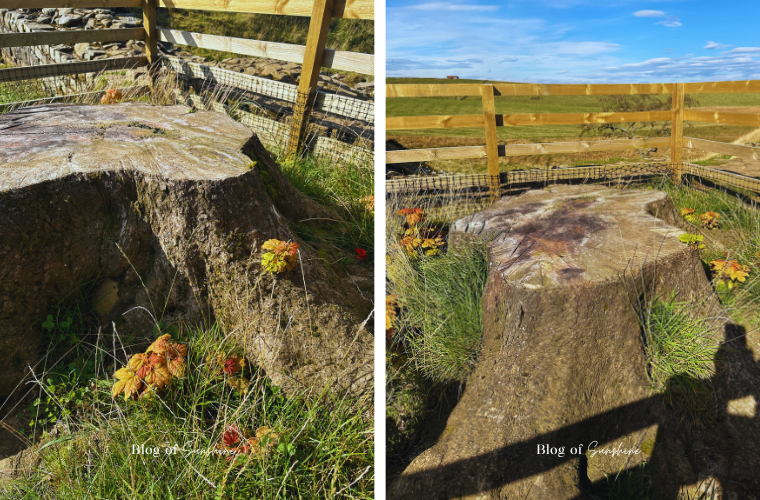
Reflection of the felled Sycamore Gap tree
Although the tree has gone, this picturesque spot is still an ideal place to pause and soak in the tranquil atmosphere. One can sit and ponder the enduring presence of the wall and reflect on the felling of the iconic tree. Afterward, you can either retrace your steps to Steel Rigg or continue exploring the surrounding sections of Hadrian’s Wall, where more stories of Roman Britain await.
To find out the latest updates about the Sycamore Gap felled tree, its regrowth, and conservation efforts, visit the Official Sycamore Gap webpage.
👉 What Weather to Expect in England Throughout the Seasons
England’s weather changes beautifully with each season, offering something unique year-round. Spring brings mild temperatures and blooming landscapes, while summer offers warmer days perfect for outdoor adventures. Autumn often features crisp air and colorful foliage, and winter can be chilly and damp, with occasional frost. No matter when you visit, be prepared for changeable weather and pack layers to stay comfortable.
| Season | Average Temperatures | Typical Weather | Travel Tips |
|---|---|---|---|
| Spring | 8–15 °C (46–59 °F) | Mild, fresh, occasional showers | Bring a light jacket and waterproof shoes. |
| Summer | 15–25 °C (59–77 °F) | Warm, sunnier days, some rain | Pack sunscreen, layers, and a raincoat. |
| Autumn | 10–18 °C (50–64 °F) | Cool, crisp, colourful foliage | Wear layers and enjoy scenic walks. |
| Winter | 2–8 °C (36–46 °F) | Cold, damp, frosty in some areas | Dress warmly and check weather forecasts daily. |
👉 Discover More Inspiring England Travel Guides
Explore even more unforgettable places to visit across England. From scenic walks and historic landmarks to hidden gems and travel tips, these guides will help you plan your perfect English adventure. Browse the articles below to find your next destination.

